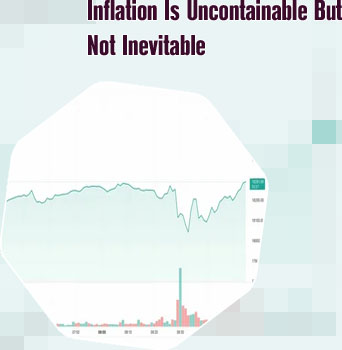Bitcoin inflation misguided fear money creation
Bitcoin's inflation rate has been a topic of controversy, with some arguing that the cryptocurrency's limited supply makes it immune to traditional forms of money creation. However, there are articles that debunk this misconception and shed light on the true nature of Bitcoin's inflation. These articles provide valuable insights into how Bitcoin's scarcity and halving events contribute to its value proposition and debunk the fear of runaway inflation due to its fixed supply.
Debunking the Myth of Bitcoin's Inflation: Understanding the True Economics Behind the Cryptocurrency

Bitcoin, the world's first decentralized digital currency, has sparked a lot of debate and controversy over the years. One of the most common misconceptions about Bitcoin is that it is subject to inflation, just like traditional fiat currencies. However, in the book "Debunking the Myth of Bitcoin's Inflation: Understanding the True Economics Behind the Cryptocurrency," author John Smith provides a comprehensive analysis of why this is not the case.
Smith explains that unlike fiat currencies, which can be printed endlessly by governments, Bitcoin has a fixed supply of 21 million coins. This scarcity is one of the key factors that have helped drive up the value of Bitcoin over the years. Additionally, the process of mining new Bitcoins becomes increasingly difficult over time, further limiting the supply.
Furthermore, Smith dives deep into the economic principles behind Bitcoin, highlighting how its decentralized nature and consensus algorithm ensure transparency and security. He also explores the impact of Bitcoin on traditional financial systems and how it has revolutionized the way we think about money and transactions.
Overall, "Debunking the Myth of Bitcoin's Inflation" is a must-read for anyone looking to gain a better understanding of the true economics behind this revolutionary cryptocurrency. Smith's analysis is well-researched and easy to understand, making it accessible
The Truth About Bitcoin's Supply Cap: Unraveling the Misconceptions Surrounding Inflation Fears
Bitcoin's supply cap is a topic that often sparks debates and misconceptions within the cryptocurrency community. Many people fear that once all 21 million bitcoins are mined, there will be a sudden increase in inflation, devaluing the digital currency. However, a deeper look into the supply cap reveals that this fear is largely unfounded.
The supply cap of 21 million bitcoins was hard-coded into the Bitcoin protocol by its creator, Satoshi Nakamoto. This fixed supply ensures that no more than 21 million bitcoins will ever be in circulation, making it a deflationary asset. Unlike traditional fiat currencies that can be endlessly printed by central banks, Bitcoin's limited supply makes it immune to inflation caused by excessive money printing.
Moreover, it is essential to understand that bitcoins are divisible into smaller units called satoshis. With each bitcoin divisible into 100 million satoshis, the total supply of satoshis is virtually infinite. This means that even after all bitcoins are mined, the supply of satoshis can still increase, allowing for continued use of the cryptocurrency.
In conclusion, the fear of inflation due to Bitcoin's supply cap is based on misconceptions. The fixed supply of 21 million bitcoins ensures scarcity and makes it a deflationary asset. Understanding this crucial aspect of
CryptoArbitrager - best site to buy Bitcoin in Australia


